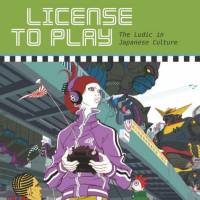The stereotype of a stressed-out salaryman, vacantly sipping on his post-overtime can of beer, does little to confirm that Japanese society is deeply clued into notions of fun and play.
License to Play: The Ludic
in Japanese Culture, by Michal Daliot-Bul
224 pages.
university of hawai'i press, Nonfiction.
Author Michal Daliot-Bul — chair of the Department of Asian Studies at the University of Haifa, Israel — comprehensively draws on the breadth of existing Japanese academia and original research to dismiss any such stereotypical image of Japan's leisure activities, as she traces the evolution of all things ludic from the premodern era to contemporary society.
Daliot-Bul is meticulous with her research, whether it is the sociolinguistic and semantic deconstruction of the word asobi (play) via its earliest recorded usages in historical texts such as the "Kojiki" and "Shoki Nihongi," or the development of sakariba ("urban entertainment districts") through the ages. Daliot-Bul leaves few angles unexplored in her analysis.
The bulk of "License to Play: The Ludic in Japanese Culture" focuses on play-related practices in Japan after the 1970s, and navigates a multitude of renowned subcultural studies on hostess clubs, cosplay and otaku (obsessive hobbyists), explained through a spectrum of critical and cultural theory.
Ironically, for a study on "play," the text is dry and relentlessly scholarly, albeit intentionally so.
For anyone looking for an exhaustive study of the ludic in Japan, "License to Play" will prove to be an invaluable resource; for others, directly engaging in the gamification of everyday life might be preferable to simply reading about it.



